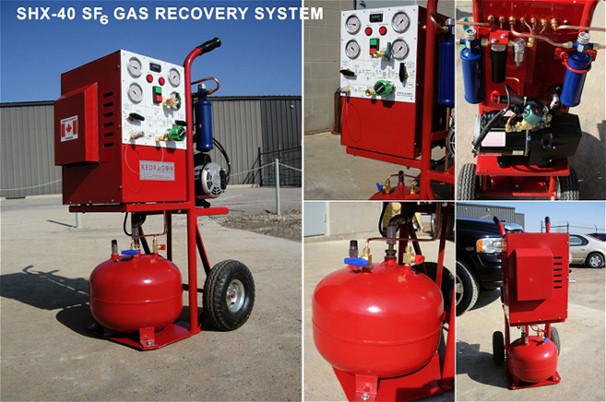|

|
| Sulphur
Hexafluoride (SF6) is a compound
that has a unique combination of
properties, such as: |

|
Chemical
Inertness |

|
Thermal
Stability |
 |
Non-Toxicity |

|
Excellent
Heat Transfer |

|
Non-Flammability |

|
High
Dielectric Strenght |

|
Non-Corrosive |

|
Ability
to Regenerate |
|
that have seen
it applied in a wide variety
of industries, amongst
others: |
|

|
Magnesium
Casting |

|
Aluminum
Degassing |
 |
Leak
Detection |

|
Electrical
Components |

|
Particle
Accelerators |
|
| In
the electrical
industry the gas is
used primarily in
circuit breakers,
puffer breakers
(where SF6 used in
place of air, oil or
vacuum), switches
and gas Insulated
transmission lines |
|
| SF6 does
have a number of
disadvantages that
are becoming more
and more critical to
an
environmentally-aware
population. |
|
| Sulphur
Hexaflouride is
considered to be a
fully flourinated
compound (FFC).
Since FFC's have
atmospheric
lifetimes of up to
50,000 Years, these
potent greenhouse
gases could
contribute
significantly and,
essentially,
permanently to
global warming if
emissions continue
to grow. If CO2 has
a global warming
potential of 1,
then SF6has a global
warming potential
some 25,000 times
higher. |
|
| The
SHF-series
of SF6 recovery
units is designed to
minimise the impact
of these means of
the following: |
|
|

|
Greenhouse
gas reduction -
through transfer of the SF6
from its current housing to
onboard or external storage
cylinders the gas does not
need to be vented into the
atmosphere |

|
By-product
removal - by use of
suitably designed filters
and scrubbers its is
possible to remove hazardous
contaminants from the SF6
gas. |
 |
Cost
reduction - by
efficiently recycling the
gas through the SHF recovery
unit it is possible to reuse
the existing SF6 gas
minimising the requirement
of purchasing new gas. |
|
| |
|
|
